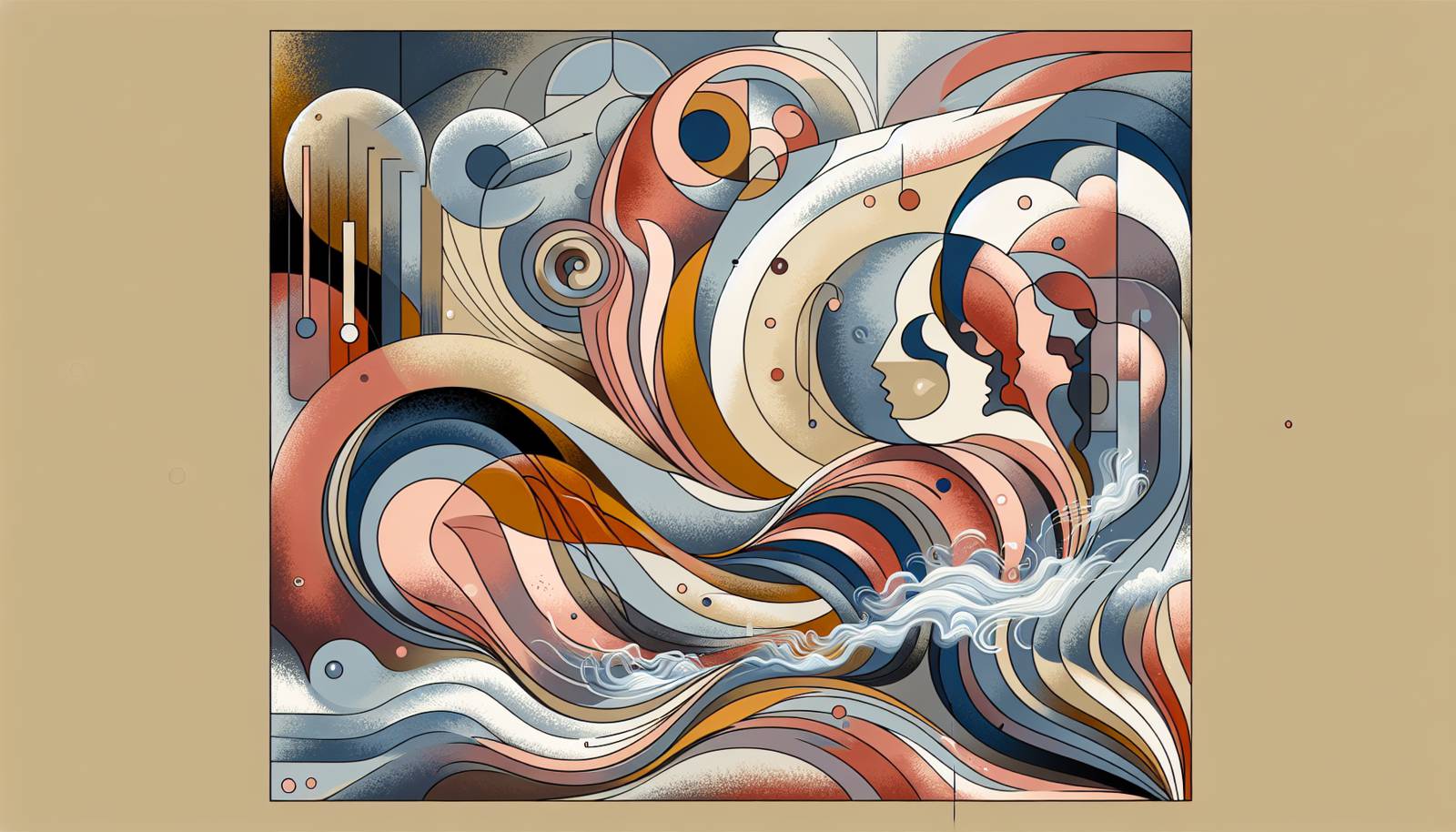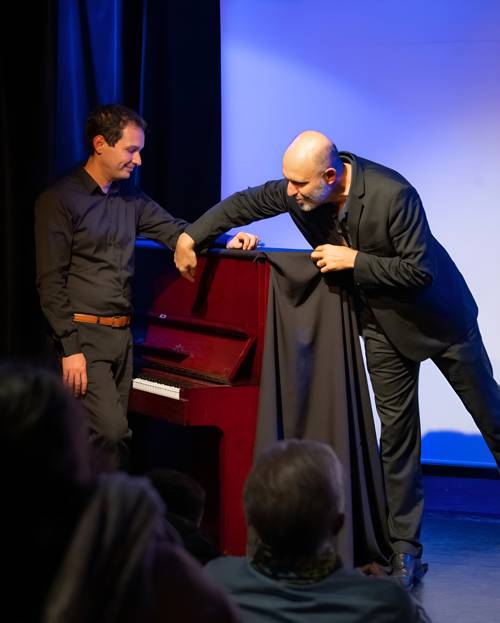
FAQ About The Cultural Impact of Surrealist Theatre on Modern Productions

What is surrealist theatre?
Surrealist theatre is a form of performance art that emerged in the early 20th century, drawing influence from surrealist visual and literary art movements. It challenges conventional narratives and logical sequences, focusing on dreams, subconscious experiences, and illogical storylines. It is often characterized by unexpected juxtapositions and shocking imagery designed to disturb or provoke the audience.

Who were some key figures in surrealist theatre?
Key figures in surrealist theatre include Antonin Artaud, who conceptualized the Theatre of Cruelty, and Roger Vitrac, known for his play "Victor, or Power to the Children." Both artists contributed significantly to the development of theatre that defies traditional narrative structures and confronts audiences with raw displays of emotion and imagination.

How has surrealist theatre impacted modern storytelling techniques in theatre?
Surrealist theatre has significantly influenced modern storytelling by encouraging non-linear narratives, the exploration of the subconscious, and the use of symbols and abstract elements to convey meaning. These techniques have allowed modern productions to explore more complex themes and emotional depths without relying solely on traditional storytelling methods.

What are some common themes explored in surrealist theatre?
Common themes in surrealist theatre include the exploration of dreams and the subconscious, the absurdity of human existence, the breakdown of rationality, and the critique of societal norms. These themes often aim to challenge audiences' perceptions of reality and provoke deeper introspection.

In what ways has surrealist theatre influenced the aesthetics of modern theatrical productions?
Surrealist theatre has influenced modern theatre aesthetics through its use of unconventional set designs, lighting, costumes, and props that defy logic and traditional beauty standards. This aesthetic embraces the bizarre and the unexpected, which can enrich a production's visual language and engage audiences in a multi-sensory experience.

Can you name a modern play or production influenced by surrealist theatre?
One example of a modern play influenced by surrealist theatre is "Waiting for Godot" by Samuel Beckett. This play incorporates absurdist elements, a non-linear narrative, and explores existential themes, all of which echo surrealist influences. The play subverts conventional expectations and invites a unique interpretative audience experience.

How does surrealist theatre differ from other avant-garde movements?
Surrealist theatre differs from other avant-garde movements primarily through its focus on the subconscious and dream-like expressions. While many avant-garde movements aim to break traditional boundaries, surrealism specifically seeks to connect with irrational impulses and dream logic, often utilizing bizarre and jarring imagery that sets it apart.

How do modern directors incorporate surrealist elements into their productions?
Modern directors incorporate surrealist elements by embracing abstract storytelling, innovative stagecraft, and symbolic imagery. These elements often manifest through dream-like sequences, bold and unexpected visual elements, and departures from traditional narrative techniques, allowing audiences to experience a play on a subconscious level.

Why are surrealist techniques still relevant in today’s theatre?
Surrealist techniques remain relevant as they offer a powerful means of exploring complex psychological and social issues. Their ability to transcend ordinary logic and linear narrative allows for innovative ways to engage audiences, encouraging introspection and new interpretations of contemporary themes.

How do actors approach roles in surrealist theatre differently?
Actors in surrealist theatre often focus on embodying abstract concepts and emotions rather than realistic characters. They use physicality and improvisational techniques to convey the illogical and dream-like qualities of surrealist works, often requiring a heightened awareness of body language and emotional subtext.

Are there specific challenges involved in staging surrealist theatre?
Staging surrealist theatre presents unique challenges, such as conveying abstract concepts visually, maintaining audience engagement without traditional storyline structures, and creating a cohesive production from disparate elements. These challenges require creativity and a willingness to experiment from both directors and performers.

What role does set design play in surrealist theatre?
Set design in surrealist theatre plays a crucial role in creating the desired atmosphere and supporting the play’s abstract themes. It often involves unconventional, imaginative designs that do not adhere to realistic settings or logic, inviting the audience to enter a space that reflects the surreal nature of the narrative.

How important is audience interpretation in surrealist theatre?
Audience interpretation is crucial in surrealist theatre as the genre thrives on abstract, ambiguous presentations that invite personal meaning-making. Each audience member may derive different interpretations from the same performance, which reflects the intended subjective engagement with the surrealist aesthetics.

What is the significance of dreams in surrealist theatre?
Dreams are often pivotal in surrealist theatre as they represent the bridge to the subconscious and a realm of pure imagination. Surrealist plays frequently use dream sequences to explore unexplored emotions and ideas, where the normal laws of logic do not apply, opening the door to novel storytelling possibilities.

How do surrealist plays typically structure their narrative?
Surrealist plays typically employ non-linear, disjointed narratives often characterized by unexpected events, symbolic sequences, and abstract dialogue. These features reflect the dream-like quality of the content, eschewing traditional plot developments to evoke emotional or psychological responses from the audience.

What are some typical visual elements found in surrealist theatre?
Typical visual elements in surrealist theatre include distorted sets, unexpected lighting, fanciful costumes, and bizarre props. These components work together to create an otherworldly atmosphere that challenges audience perceptions and enhances the surreal nature of the production.

What impact has surrealist theatre had on film and other media?
Surrealist theatre has influenced film and other media through its exploration of non-linear narratives and symbolic imagery. Filmmakers like David Lynch and Luis Buñuel have drawn from these techniques, creating works that emphasize dream logic, subconscious themes, and visual abstraction, which resonate beyond traditional storytelling forms.

How can audiences prepare themselves for a surrealist theatre performance?
Audiences can prepare for a surrealist theatre performance by keeping an open mind and embracing ambiguity. Engaging with the abstract and being ready to interpret symbols and themes personally can enhance the experience. Researching key concepts and past works of surrealist theatre may also provide helpful context.

In what ways does surrealist theatre contribute to cultural discussions?
Surrealist theatre contributes to cultural discussions by challenging audience perceptions and questioning societal norms through its unconventional form. It provokes dialogue about reality, identity, and human experiences, encouraging deeper consideration and debate on such topics within cultural and artistic circles.
